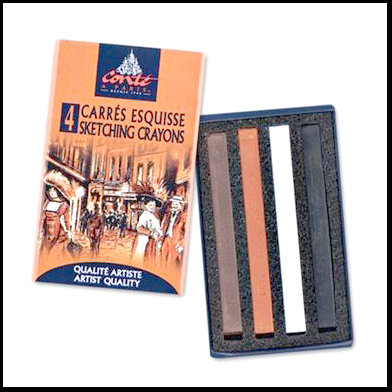Pencils category of drawing materials is vast. So much so that it deserves its own post just to cover the very basics of pencil types.
Historically, records show that graphite in solid form was discovered around 1500's. It was easily sawed into strips and wrote well. Pencil in many foreign languages means "lead pen".
The term "lead" was used for graphite as early chemists thought it to be a form of elemental lead, Pb. Graphite is an allotrope (form) of carbon. Others are diamonds, carbon fibers, etc. To a see more complete list, if you have an interest, visit this page on Wikipedia.
Because graphite is soft and needed protection, it was first wrapped in string or sheep skin for protection. Later on other materials like wood were attempted.
 |
| Oldest Known Cased Pencil - Collection - Faber-Castell USA |
 |
| Early Development of Wood Casings |
Today, graphite lead for pencils is manufactured by mixing finely ground graphite with clays to produce 18 grades of lead, from the hardest, 9H, to the softest, B9. The ratio of clay to graphite determines the hardness by using more clay for a harder lead. Lead pencils do not contain elemental lead.
From this point on, there are many types of various pencils. Colored pencils like Prismacolor has eight varieties
of pencil types. There are hardened grease markers with peal
off paper. A newcomer to the industry are colored and graphite pencils which when wet with water, act like watercolors. And the list goes on:
pastel pencils, (See Post: Drawing Materials: Crayons 2 - Chalk & Pastels) and
mechanical lead holders and eraser pencils, to mention a few.
To see a more complete list of available pencils, visit this page at Dick Blick. It is overwhelming.






